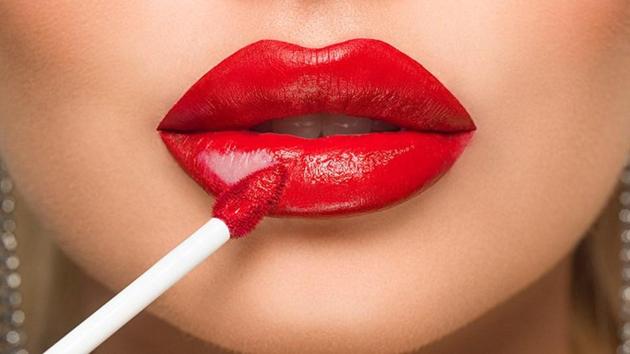A closer look at the possible risks associated with frequent lipstick application and tips for maintaining healthy lips
Lipstick is a beloved cosmetic product that has been enhancing the beauty of lips for centuries. However, recent discussions have shed light on potential side effects linked to regular lipstick use. While lipstick can be a fun and glamorous addition to one’s beauty routine, it’s essential to be aware of the potential risks and take steps to maintain healthy lips.
Dryness and Chapping: One of the common side effects of frequent lipstick use is dryness and chapping of the lips. Many lipsticks contain ingredients that can cause dehydration, leading to flaky and uncomfortable lips. To prevent this, it is important to keep the lips moisturized by regularly applying lip balm or opting for moisturizing lipsticks that contain hydrating ingredients like shea butter or coconut oil.
Allergic Reactions: Some individuals may experience allergic reactions to certain ingredients present in lipsticks. These reactions can manifest as redness, swelling, itching, or a rash around the lips. It is crucial to be mindful of any known allergies and carefully read the ingredient list of lipsticks. If you experience any adverse reactions, discontinue use and consult a dermatologist.
Discoloration: Regular use of heavily pigmented lipsticks, especially those with dark or vibrant colors, may cause gradual discoloration of the lips over time. This discoloration can appear as darkening or unevenness in lip tone. To minimize the risk, consider alternating between different shades and opt for natural or lighter-colored lipsticks.
Lip Irritation: Some lipsticks contain potentially irritating ingredients, such as fragrances or preservatives, which can cause irritation or sensitivity. Individuals with sensitive skin or a history of allergic reactions should be cautious and opt for hypoallergenic or fragrance-free lipsticks. If you experience persistent irritation, it is advisable to seek medical advice.
Ingestion of Harmful Substances: It is important to be mindful of the fact that lipsticks are applied directly on the lips, and there is a possibility of ingesting small amounts of the product. Some lipsticks may contain harmful substances like lead or other heavy metals. While the levels of these substances are regulated, it is wise to choose lipsticks from reputable brands and look for those labeled as “lead-free” or “heavy metal-free.”
Maintaining Healthy Lips:
While the potential side effects of lipstick use can be concerning, there are steps you can take to maintain healthy and beautiful lips:
Stay Hydrated: Adequate hydration is essential for overall skin health, including the lips. Drink plenty of water throughout the day to keep your lips hydrated from within.
Exfoliate: Regularly exfoliate your lips to remove dead skin cells and promote a smooth texture. You can use a homemade lip scrub or gently brush your lips with a soft toothbrush.
Protect from the Sun: Lips are susceptible to sun damage, so it’s crucial to protect them from harmful UV rays. Use a lip balm or lipstick with SPF protection to shield your lips from sunburn and premature aging.
Choose Lipstick Wisely: Opt for lipsticks made with natural and nourishing ingredients. Look for products that are free from harmful chemicals and known irritants.
Remove Makeup Properly: Ensure that you remove your lipstick at the end of the day using a gentle makeup remover or cleansing oil. This will help prevent any buildup of product and allow your lips to breathe.
Remember, moderation is key. While occasional use of lipstick is unlikely to cause significant harm, it’s important to be mindful of your overall lip health. By being aware of the potential side effects and following these tips, you can enjoy wearing lipstick while keeping your lips healthy, smooth, and beautiful.
(The information provided in this article is for educational purposes only and should not be considered as medical advice. Consult with a dermatologist or healthcare professional for personalized recommendations and guidance.)



